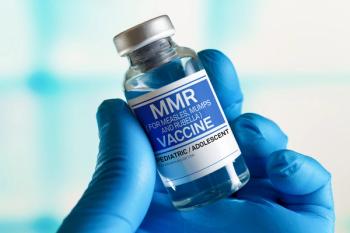
Researchers Assess Second Primary Lung Cancer Among Survivors Without Smoking History
The 10-year cumulative incidence rate was equally high between both cohorts of smoking and nonsmoking individuals.
New study findings announced the importance of identifying risk factors for developing second primary lung cancer (SPLC) among nonsmoking individuals that have survived lung cancer. Published in JAMA Network Open, researchers found that the risk of SPLC in lung cancer survivors who never smoked was as high among individuals with initial primary lung cancer (IPLC) who have smoked.
One-quarter of individuals around the globe are diagnosed with lung cancer without smoking habits, according to study authors. The researchers reported that previous studies connected the diagnosis with radon exposure, secondhand smoke, and genetic susceptibly— however, a thorough examination has not yet been conducted.
Further research has found that lung cancer survivors have a 4 to 6 times greater risk of developing SPLC, compared to the risk of being diagnosed with IPLC. As SPLC diagnoses have continued to grow, the study authors noted that it is a rising public health concern.
To analyze the disease burden of SPLC among lung cancer survivors, researchers conducted a large, ethnically diverse, population-based cohort study with data from the Multiethnic Cohort Study (MEC), with long-term prospective follow-up on individuals who smoked and never smoked.
The study authors noted that SPLC was met if the individuals “have different histology from that of the IPLC, [and] (2) have at least 2 years of a disease-free interval from the time of IPLC diagnosis.”
The MEC study included 214,862 individuals from California and Hawaii from April 18, 1993, to December 31, 1996, and had follow-ups for IPLC and SPLC development until July 1, 2017. The current researchers assessed the data from July 1, 2022, to January 31, 2023.
The study authors noted that there were 2 primary outcomes in the trial. The first outcome included a 10-year collective incidence rate of IPLC among all participants and a 10-year collective incidence of SPLC among individuals with IPLC. The second primary outcome included the standardized incidence ratio (SIR) of smoking history among the cohort. This was identified by dividing the SPLC incidence by the IPLC incidence.
The researchers conducted subgroup analyses based on sex, smoking prevalence, early stage or IPLC, longer time at risk of developing SPLC, and the most common IPLC. All analyses were conducted using R, version 4.3.1 statistical software.
The results found that the 10-year cumulative IPLC incidence among individuals who had a smoking history was 2.40%, 7 times higher than individuals that never smoked. However, the 10-year SPLC incidence following a diagnosis of IPLC was 2.84% among individuals that never smoked and 2.72% for those that smoked.
“SPLC exhibits a sustained risk for more than 10 years. The longer survival of never-smokers with IPLC may translate into an even longer time at risk for SPLC, thus requiring long-term follow-up,” noted the study authors.
The 10-year cumulative incidence rate was just as high between both cohorts of smoking and nonsmoking individuals, which highlighted the need to discover risk factors of SPLC among nonsmokers.
“As randomized clinical trials are unlikely in this setting where stopping screening or screening less than annually may result in potential harm, alternative novel methods such as trial emulation and simulation studies that leverage large health care utilization and outcomes data sets may be critical next steps to fill the evidence gap,” said the study authors.
Reference
Second Primary Lung Cancer Among Lung Cancer Survivors Who Never Smoked. Jama Network Open. News release. November 15, 2023. Accessed January 9, 2024.
Newsletter
Stay informed on drug updates, treatment guidelines, and pharmacy practice trends—subscribe to Pharmacy Times for weekly clinical insights.














































































































































































































